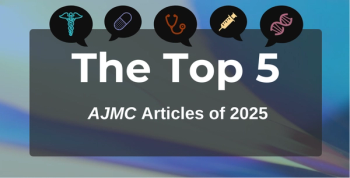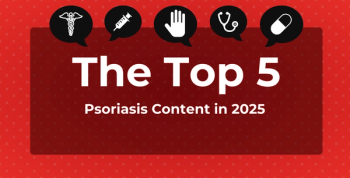
Study Finds Prescription Drug Monitoring Programs Ineffective at Curbing Overdoses
Prescription drug monitoring programs (PDMPs) are now in place in response to rising levels of overdoses involving opioids and synthetic opioids. But a new study that sought to clarify the relationship between PDMPs and their effectiveness in attacking the nation’s drug problem found limited to no evidence that they actually work. In addition, 3 of the studies reviewed found an increase in heroin overdose deaths after the programs began.
Prescription drug monitoring programs (PDMPs) are now in place in all 50 states and the District of Columbia in response to rising levels of overdoses involving opioids and synthetic opioids. But a new study published in the Annals of Internal Medicine that sought to clarify the relationship between PDMPs and their effectiveness in attacking the nation’s drug problem found limited to no evidence that they actually work.
In addition, 3 of the 17 studies reviewed found an unintended consequence, in that heroin
“Prescription drug monitoring programs have become a hallmark of any policies that have been put into place, “ said lead author David S. Fink, MPH, a doctoral candidate in epidemiology at Columbia University, in an interview with The American Journal of Managed Care® (AJMC®).
The programs all vary in what they require of both doctors and pharmacists. Some are voluntary and some are not. So far in 2018, 36 states have so-called “mandatory use” policies, which mean that providers must register and use the program.
This review of 17 studies about PDMPs sought to clarify what would make such a program effective, since they are all implemented differently, all with their own nuances, he said.
Although 10 of the studies suggested that PDMP implementation had some low evidence tying it to reductions in fatal overdoses, the evidence was not enough.
“There’s no evidence to say a PDMP works,” Fink said, adding later, “PDMP programs alone are not going to be sufficient to reduce overdoses.”
Of the programs that were most effective, they shared these characteristics, which all indicate signs of a robust and aggressive program, he said:
- Mandatory review of PDMP data by healthcare providers before writing prescriptions
- Frequent, or weekly, updates of data
- Provider authorization to access PDMP data
- Monitoring of noncontrolled substances, even over-the-counter pain relievers.
These factors are meant to combat issues like “doctor shopping,” where a patient seeks multiple opioid prescriptions from different providers, but both Fink and a critic of PDMP programs had concerns about the impact of the programs, albeit different ones.
Fink said his concern is “that when you take away a primary drug that somebody is dependent upon, what’s going to happen in that next stage if a [rehabiliation] program isn’t provided to help those individuals?”
“We saw the same thing when abuse-deterrent OxyContin came out and we saw the switch in heroin overdoses. With PDMPs we seem to be finding the exact same thing,” he said.
Part of the problem is there is a shortage of doctors who are trained in addiction medicine, especially
“Our systematic review found that 3 of the 6 studies that have examined the postimplementation effect of PDMPs on heroin found an increase in heroin overdose deaths following PDMP implementation,” Fink wrote in a follow-up email. “Although the mechanism is unknown, it is possible that restricting the supply of prescription opioids to opioid-dependent persons might drive them to illicit heroin. Thus, policies that can restrict the supply of opioids, such as PDMPs, should be implemented within a suite of policies that can identify and treat those who are opioid-dependent to prevent them from moving to illicit heroin.”
Fink said it would be beneficial for doctors to increase their proficiency with MAT, as well as developing greater empathy for patients who may be seeking care from multiple doctors. The patient may be reported to authorities but without a referral for treatment, he said.
Some experts have started to call for
But more often than not, PDMP programs are a law enforcement tool to catch doctors and patients, said a frequent critic of the programs in an email to AJMC®.
“Sixty percent of 'doctor shoppers' are actually legitimate patients with pain disease, not those with addiction, who are being purposely undertreated and need to look for adequate pain medicine doses by going to more than one doctor,” said Thomas F. Kline, MD, a geriatrician in North Carolina. “This issue was not addressed as an unintended consequence.”
In addition, Kline said PMDPs are being used to send “raw data to law enforcement for further raids and persecution, shaming and blaming medical professionals and their patients whose profiles do not fit the law enforcement view of proper practice of medicine.”
Fink said that there are very few, if any, data on the effects that policies intended to address rising overdose deaths are having on
Major medical associations are in favor of PDMPs, but want them used for patient care first and not as a law enforcement tool, as evidenced by
The 17 articles reviewed for this study were pulled from 2661 records that met the inclusion criteria. In addition, the authors ranked the studies according to a risk of bias, ranging from low to moderate to severe. Most of the studies fell into the moderate to severe category.
Fink and his fellow researchers used state-level and national data to pull information about nonfatal and fatal overdoses.
All of the studies examining the association between PDMP implementation and overdose had methodological shortcomings, including inadequate confounding factors and no adjustment for competing laws and policies that might affect overdoses, such as Good Samaritan, naloxone distribution, or medical marijuana laws.
Fink said more research needs to be done to see if
Reference
Fink DS, Schleimer JP, Sarvet A, et al. Association between prescription drug monitoring programs and nonfatal and fatal drug overdoses: a systematic review [published online May 7, 2018]. Ann Intern Med. doi: 10.7326/M17-3074.
Newsletter
Stay ahead of policy, cost, and value—subscribe to AJMC for expert insights at the intersection of clinical care and health economics.








































